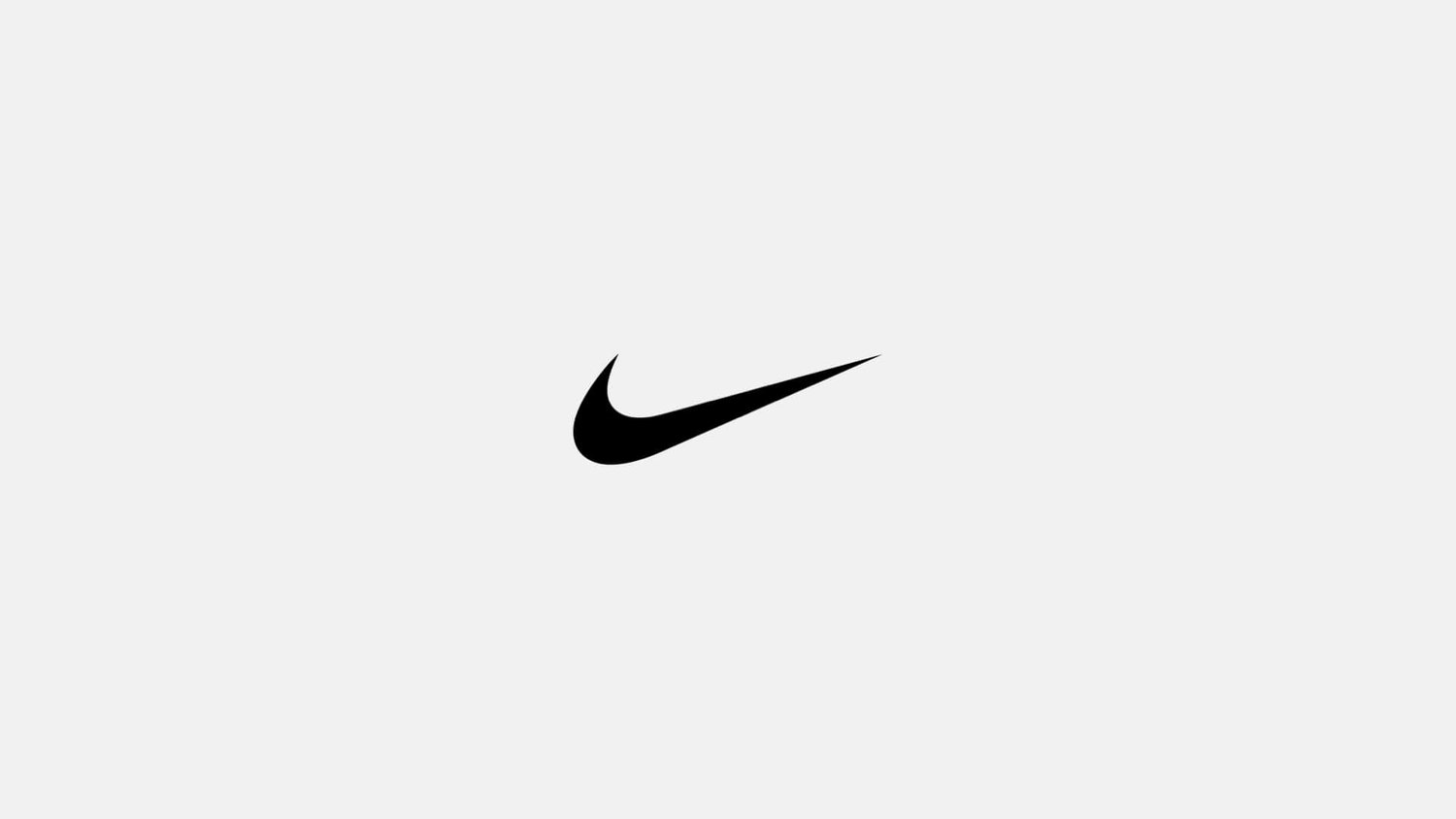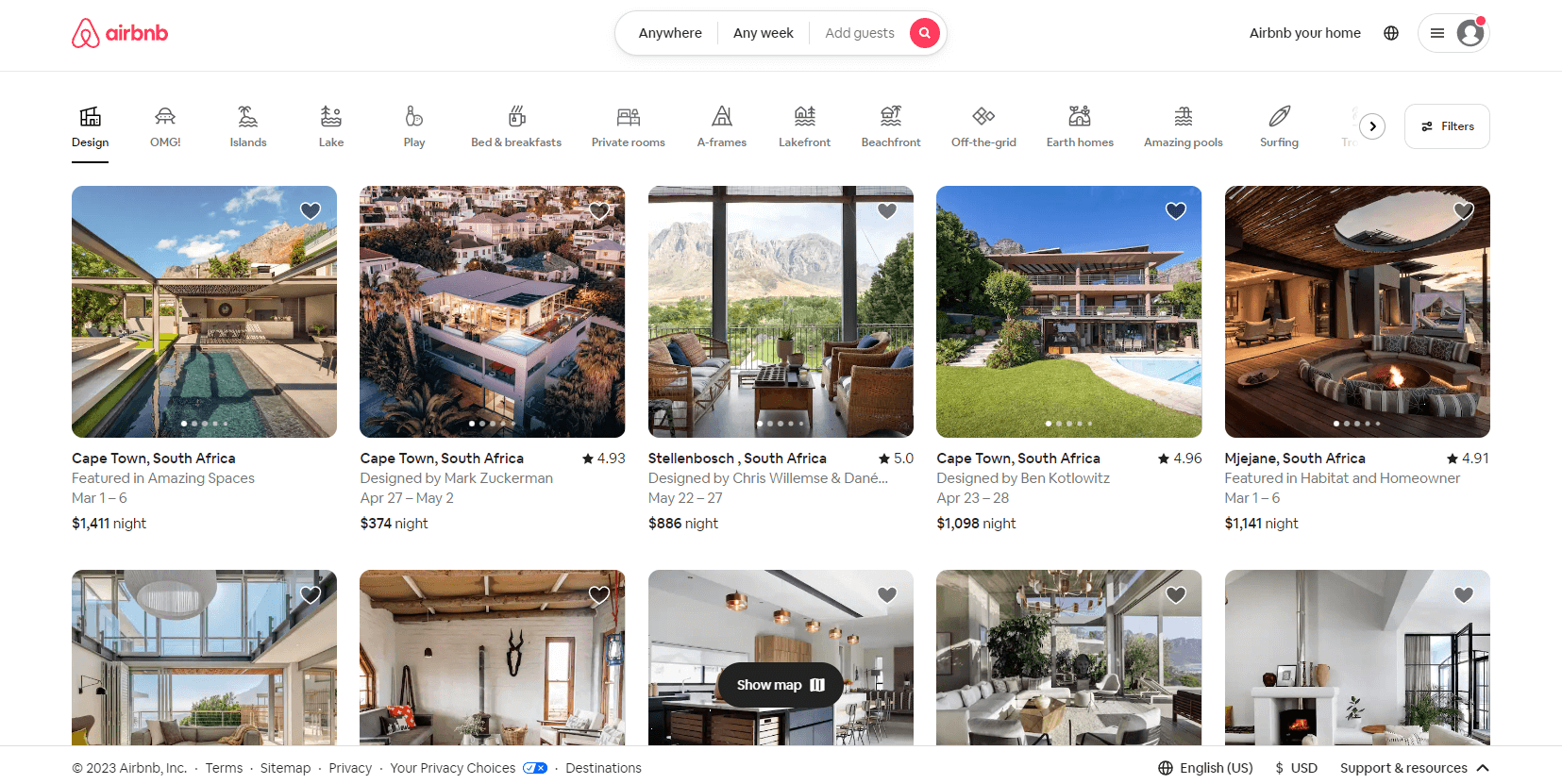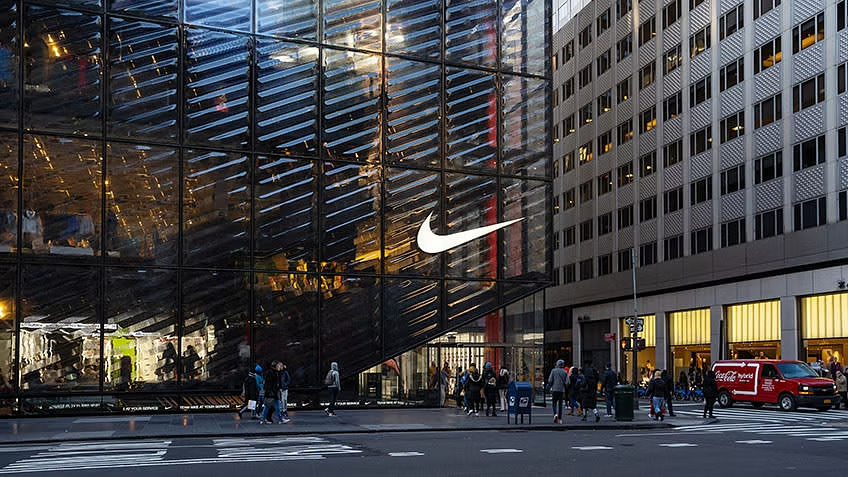|
Getting your Trinity Audio player ready...
|
Have you ever wondered how some companies can create such successful products and services, while others struggle to stay afloat? The answer may lie in the power of design.
Design has become an increasingly important aspect of business strategy in recent years. It’s not just about making things look pretty, but about creating experiences that engage and delight customers. From Apple’s sleek and intuitive products to Airbnb’s user-friendly interface, design has played a major role in the success of many companies.
In today’s competitive marketplace, design can be the ultimate weapon for success. Whether you’re launching a new product or revamping your brand, a well-designed experience can make all the difference.
In this article, we’ll explore the power of design and how it can help you achieve your business goals.
Design
Design is the shaping of ideas, whether the physical world we live in, the experiences we enjoy, or the systems that underpin how we live our lives.
What is Design?
Design is more than just aesthetics; it encompasses the careful arrangement of visual elements, the thoughtful structuring of information, and the deliberate crafting of user experiences. It is the embodiment of your brand’s identity, values, and aspirations.
Consider Apple, a brand that revolutionized the tech industry not only through innovation but also through its meticulous design choices. From the sleek lines of its products to the intuitive user interfaces, Apple’s design approach has elevated its brand to iconic status and fostered unwavering customer loyalty.
Statistics further reinforce the impact of design on business success. A study by the Design Management Institute reveals that design-driven companies outperform their competitors by 211% on the S&P 500 index over ten years. This demonstrates that investing in design is not merely a matter of aesthetics, but a strategic decision that can yield significant financial returns.
Design also plays a critical role in building emotional connections with your target audience. Consider the Nike brand, which masterfully uses design to inspire and empower athletes worldwide. Their iconic swoosh logo and visually striking ad campaigns evoke a sense of determination and aspiration, creating a deep emotional bond with their customers.

By understanding the emotional triggers of your target audience and aligning your design choices accordingly, you can forge lasting connections and build brand loyalty.
The Key Elements of Design: Beyond Aesthetics
Design encompasses a set of key elements that go beyond surface-level aesthetics. It involves a thoughtful and intentional process that combines creativity, functionality, and strategic thinking.
Let’s explore the fundamental elements of design that contribute to its effectiveness:
1. Visual Composition
Visual composition involves arranging visual elements such as colors, typography, images, and layout harmoniously and engagingly. The careful consideration of visual hierarchy, balance, and contrast helps guide the viewer’s attention and convey key messages effectively.
2. User Experience (UX)
User Experience (UX) design focuses on creating intuitive, seamless, and delightful interactions between users and products or services. By understanding the needs, motivations, and pain points of your target audience, you can design experiences that meet their expectations and drive satisfaction.
3. Brand Identity
Design plays a vital role in establishing and expressing your brand’s identity. It involves creating a visual language that represents your brand’s values, personality, and unique selling proposition. Consistent use of colors, fonts, imagery, and other design elements across all touchpoints helps build brand recognition and reinforce brand identity.
4. Functionality
Design is not solely about aesthetics; it also considers functionality and usability. Effective design ensures that the user can easily navigate, understand, and interact with the offering. Intuitive navigation, clear information architecture, and user-friendly interfaces are crucial aspects of functional design.
5. Innovation and Creativity
Design encourages innovative thinking and pushes boundaries. It involves exploring new ideas, experimenting with novel concepts, and finding unique solutions to problems. By embracing creativity in design, businesses can differentiate themselves from competitors and capture the attention and interest of their target audience.
Take the example of Airbnb, which revolutionized the travel industry through its innovative design approach. By creating a platform that showcases visually appealing and user-friendly property listings, Airbnb transformed the way people experience travel accommodations. Their emphasis on design not only elevated their brand but also disrupted an entire industry.

By understanding and integrating these key elements into your design strategy, you can create impactful experiences that resonate with your audience, differentiate your brand, and drive business success. In the next section, we will explore the influence of design on various aspects of your business.
The Impact of Design on Business Success
Design has a profound impact on business success, influencing customer perception, emotional connection, and ultimately, the bottom line. In this section, we will delve into how design contributes to business growth and why investing in design is crucial for long-term success.
1. Enhancing Customer Perception and Experience
Design plays a pivotal role in shaping how customers perceive a brand and its offerings. A well-designed brand identity, website, or product packaging can evoke positive emotions, build trust, and create a sense of professionalism and credibility.
On the other hand, poor design choices can leave customers with a negative impression, hindering their willingness to engage with the brand. Research shows that 94% of first impressions are design-related, highlighting the significance of design in shaping customer perception from the outset.
2. Fostering Emotional Connection and Brand Loyalty
Design has the power to evoke emotions and forge a strong connection between customers and a brand. Aesthetically pleasing and functional design elements can create positive associations, triggering feelings of delight, excitement, or comfort.
When customers have a positive emotional experience with a brand, they are more likely to develop a sense of loyalty and become advocates, leading to increased customer retention and word-of-mouth referrals.
Studies indicate that emotionally connected customers have a 306% higher lifetime value compared to those who are not emotionally engaged.
3. Driving Differentiation and Competitive Advantage
In a competitive marketplace, design can be a key differentiator that sets businesses apart from their rivals. A unique and visually appealing design can make a brand stand out, capturing customers’ attention and making a memorable impression.
By leveraging design to create a distinct and cohesive brand identity, businesses can position themselves as leaders in their industry and establish a competitive advantage.
Design-driven companies, such as Airbnb and Tesla, have disrupted their respective markets by reimagining traditional design conventions and delivering innovative and user-centric experiences.
4. Boosting Sales and Conversions
Well-executed design can have a significant impact on sales and conversions. Studies have shown that visually appealing websites and marketing materials have higher conversion rates compared to poorly designed counterparts.
Intuitive user interfaces, persuasive call-to-action buttons, and visually engaging product presentations can positively influence customer behavior and drive them toward making a purchase.
By investing in effective design strategies, businesses can optimize their conversion funnels and generate higher sales volumes.
5. Adapting to Changing Customer Expectations
In today’s fast-paced digital landscape, customer expectations for design have significantly evolved. Customers expect seamless and visually appealing experiences across various platforms and devices.
Businesses that fail to meet these expectations risk losing customers to competitors who prioritize design excellence.
By staying abreast of design trends, adopting user-centric design principles, and continuously enhancing the visual aspects of their brand, businesses can stay relevant, attract new customers, and retain their existing customer base.
Incorporating design thinking into business strategies is no longer a luxury but a necessity for long-term success. By recognizing the impact of design on customer perception, emotional connection, and business growth, business leaders can make informed decisions to prioritize and invest in design as a strategic imperative.
The Role of Design in Branding
Design plays a pivotal role in shaping the identity and success of a brand. It goes beyond aesthetics and encompasses the strategic use of visual elements to create a strong brand image and deliver a compelling brand experience.
As a business leader, understanding the role of design in branding is crucial for building a memorable and impactful brand. Let’s explore how design influences and contributes to the branding process.
1. Establishing Brand Identity and Personality
Design is instrumental in establishing a brand’s identity and personality. It helps define how a brand wants to be perceived by its target audience. Through thoughtful design choices such as logo design, color palette selection, and visual style, a brand can convey its core values, mission, and unique selling proposition.
For instance, the sleek and minimalist design of Apple products reflects their commitment to simplicity, innovation, and premium quality, creating a distinct brand identity that resonates with their customers.

2. Creating Consistency Across Brand Touchpoints
Consistency is key to building a strong brand. Design ensures that brand elements are consistently applied across various touchpoints, including websites, packaging, advertisements, social media, and physical spaces.
Consistent design helps reinforce brand recognition, fosters trust, and enhances the overall brand experience.
Consider Coca-Cola, which maintains consistent visual elements like its iconic red color, swooping logo, and distinct typography across all its marketing materials, creating a unified and recognizable brand presence worldwide.
3. Communicating Brand Values and Messaging
Design has the power to communicate a brand’s values, messaging, and story visually. By incorporating design elements that align with the brand’s essence, businesses can effectively convey their desired message and connect with their target audience on an emotional level.
Patagonia, a renowned outdoor clothing brand, uses nature-inspired imagery and eco-friendly packaging design to emphasize its commitment to environmental sustainability. This visually communicates their brand values and resonates with environmentally conscious consumers.
4. Differentiating from Competitors and Building Brand Recognition
In a crowded marketplace, design can be a powerful tool for differentiation and brand recognition. A well-designed brand identity can set a business apart from its competitors and create a lasting impression in the minds of consumers.
Think about Nike’s “swoosh” logo—a simple yet instantly recognizable design that has become synonymous with the brand. Through consistent use and strategic placement, Nike has built a strong brand recognition that instantly connects with sports enthusiasts worldwide.

By understanding the role of design in branding, business leaders can harness its potential to build a compelling brand image, foster customer loyalty, and drive business growth. Whether it’s creating a visually appealing website, designing engaging packaging, or crafting a captivating social media presence, investing in design expertise and resources is essential for a successful branding strategy.
Remember, design is not just about aesthetics—it’s a strategic tool that helps businesses connect with their audience, differentiate themselves from competitors, and create a memorable brand experience. Embrace design as a fundamental component of your branding efforts and unleash its power to propel your business forward.
Integrating Design into Business Strategy: The Role of Design Thinking
Design thinking is a problem-solving approach that places human needs and experiences at the center of the design process. It involves empathy, collaboration, iteration, and a focus on creating innovative solutions.
When integrated into the business strategy, design thinking can drive innovation, foster creativity, and help businesses stay agile in a rapidly changing market. Let’s explore the key aspects of integrating design thinking into business strategy.
1. Embracing a User-Centric Mindset
Design thinking starts with understanding the needs, desires, and pain points of the end-users. By developing a deep empathy for customers, businesses can gain valuable insights that inform the design process.
This user-centric mindset goes beyond demographics and explores the emotions, motivations, and behaviors of customers. By placing the user at the forefront, businesses can create products, services, and experiences that truly resonate with their target audience.
2. Encouraging Cross-Functional Collaboration
Design thinking promotes cross-functional collaboration, bringing together individuals from various disciplines within an organization. By involving diverse perspectives and expertise, businesses can generate innovative ideas and solutions that address complex challenges.
Through collaborative brainstorming sessions, workshops, and design sprints, teams can leverage their collective knowledge and creativity to develop breakthrough concepts that align with business goals.
3. Iterative Prototyping and Testing
Design thinking encourages a mindset of continuous iteration and improvement. Rather than relying solely on theoretical planning, businesses can quickly prototype and test their ideas in a real-world context.
Prototyping allows for early feedback and validation, helping to identify flaws, refine designs, and ensure that solutions meet user needs. By embracing a culture of rapid experimentation and learning, businesses can minimize risks and optimize their design solutions before full-scale implementation.
4. Driving Innovation and Differentiation
Design thinking has the power to drive innovation by challenging conventional wisdom and exploring new possibilities. It encourages businesses to think beyond incremental improvements and instead envisions radical transformations.
By embracing a mindset of curiosity, exploration, and experimentation, businesses can uncover unique opportunities and create products or services that stand out in the market. Design-driven innovation can lead to new revenue streams, increased market share, and competitive advantage.
5. Creating a Design-Led Culture
Integrating design thinking into the business strategy requires fostering a culture that values and embraces design. This involves leadership support, providing resources for design initiatives, and empowering employees to think creatively and take risks.
Businesses that prioritize design as a strategic imperative create an environment where innovation and collaboration thrive. By nurturing a design-led culture, businesses can attract top talent, retain employees, and foster a dynamic and forward-thinking organization.
Incorporating design thinking into the overall business strategy enables businesses to adapt to changing customer needs, differentiate themselves from competitors, and drive innovation.
By embracing a user-centric mindset, promoting cross-functional collaboration, iterating through prototyping and testing, and fostering a design-led culture, businesses can harness the power of design thinking to stay agile, customer-focused, and successful in today’s dynamic marketplace.
Design Strategies for Effective Branding
Design plays a crucial role in shaping a brand’s identity and perception in the market. It is the visual representation of a brand’s values, personality, and promise to its target audience. To establish a strong and memorable brand, businesses need to adopt effective design strategies that align with their brand strategy.
Here are some key design strategies for effective branding:
1. Consistent Visual Identity
A strong brand requires a consistent visual identity across all touchpoints. This includes elements such as logos, color palettes, typography, and graphic styles. Consistency in visual design helps build recognition and fosters trust among customers.
When all design elements are cohesive and aligned with the brand’s values, it creates a unified and memorable brand experience.
2. Storytelling through Design
Design has the power to tell stories and evoke emotions. By incorporating storytelling elements into design, businesses can create a deeper connection with their audience.
Visual narratives, compelling imagery, and thoughtful design choices can communicate the brand’s story, values, and purpose in a way that resonates with customers. Story-driven design helps differentiate the brand and leaves a lasting impression.
3. User-Centered Design
Putting the user at the center of design is essential for effective branding. Understanding the needs, preferences, and behaviors of the target audience allows businesses to design experiences that meet their expectations.
User-centered design involves conducting user research, usability testing, and creating intuitive and user-friendly interfaces. By designing with the user in mind, businesses can enhance customer satisfaction and loyalty.
4. Responsive Design
In today’s digital landscape, it is crucial to consider responsive design. With the increasing use of mobile devices, websites, and digital platforms need to adapt and provide a seamless user experience across different screen sizes.
Responsive design ensures that the brand’s visual identity and messaging remain consistent, regardless of the device being used. It helps businesses reach a wider audience and deliver a consistent brand experience.
5. Emotional Branding
Design can evoke emotions and create a memorable brand experience. Businesses can leverage design strategies to tap into the emotions of their audience and create a strong emotional connection with their brand.
From color psychology to typography choices, each design element can influence how customers perceive and feel about the brand.
By understanding the emotional impact of design choices, businesses can create a brand that resonates deeply with their target audience.
6. Accessibility and Inclusivity
Design should be inclusive and accessible to a diverse range of users. Considering accessibility features in design, such as color contrast for visually impaired individuals or providing alternative text for images, ensures that the brand’s message reaches a wider audience.
By prioritizing accessibility and inclusivity in design, businesses demonstrate their commitment to equality and create a positive brand image.
By implementing these design strategies, businesses can create a powerful and effective brand that resonates with their target audience. Design becomes a strategic tool for communicating the brand’s values, fostering emotional connections, and differentiating the brand in the market.
Through consistent visual identity, storytelling, user-centered design, responsiveness, emotional branding, and accessibility, businesses can elevate their brand and drive long-term success.
Trends in Design and Emerging Technologies
In the ever-evolving landscape of design, businesses must stay abreast of the latest trends and emerging technologies. By adopting these advancements, you can ensure that your brand’s design remains relevant, innovative, and appealing to your target audience.
Here are some notable trends in design and emerging technologies that are shaping the industry:
1. Minimalism and Simplified Design
The trend of minimalism continues to dominate the design world. Clean, simple, and uncluttered designs with ample white space not only create an aesthetically pleasing visual experience but also convey a sense of elegance and sophistication.
Minimalistic design allows for easy navigation, improved readability, and enhanced user experience.
2. Bold Colors and Gradients
Vibrant and bold color palettes are gaining popularity in design. Brands are embracing bright hues and striking gradients to create visually captivating designs that leave a lasting impression.
Bold colors help brands stand out in crowded marketplaces and evoke specific emotions or associations with their target audience.
3. Custom Illustrations and Unique Visuals
Brands are moving away from generic stock imagery and embracing custom illustrations and unique visuals. Custom illustrations allow brands to tell their story distinctively and memorably.
These visuals can be tailored to reflect the brand’s personality, values, and target audience, helping to establish a strong visual identity.
4. Typography as a Design Element
Typography is no longer just about legibility; it has become a design element in itself. Brands are experimenting with typography to create eye-catching and expressive designs.
From custom fonts to creative typography treatments, businesses are using typography to reinforce their brand message and create visual impact.
5. Responsive Design and Mobile Optimization
With the increasing use of mobile devices, responsive design, and mobile optimization have become essential considerations. Designing for mobile devices requires adapting layouts, optimizing images, and ensuring smooth user experiences across different screen sizes.
Mobile-first design approaches are becoming the norm, as brands prioritize delivering seamless experiences on smartphones and tablets.
6. Augmented Reality (AR) and Virtual Reality (VR)
AR and VR technologies are revolutionizing the way brands engage with their customers. These immersive experiences enable brands to create interactive and memorable encounters, allowing users to visualize products in real-world contexts or explore virtual environments.
AR and VR can enhance brand experiences, particularly in industries like retail, interior design, and tourism.
7. Voice User Interface (VUI) Design
As voice assistants and smart speakers become increasingly popular, VUI design is gaining importance. Designing voice interfaces requires considering factors such as natural language processing, voice interactions, and audio branding.
Brands are exploring ways to create seamless and intuitive voice-based experiences that align with their brand voice and values.
8. Sustainability and Eco-friendly Design
With growing environmental consciousness, sustainability has become a key consideration in design. Brands are incorporating eco-friendly practices into their design processes, using sustainable materials, minimizing waste, and promoting sustainable messages.
Design that aligns with sustainability values resonates with environmentally conscious consumers and positions the brand as socially responsible.
By staying informed about these design trends and emerging technologies, you can leverage them to enhance your brand’s visual identity, user experience, and overall brand perception. Embracing new design trends and technologies allows your brand to stay ahead of the curve, differentiate from competitors, and meet the evolving expectations of your audience.
Remember, it is essential to evaluate these trends and technologies in the context of your brand’s unique positioning and target audience. Select the trends that align with your brand strategy and contribute to achieving your business objectives.
Continuously evolve your design approach, experiment with new ideas, and remain open to adopting emerging technologies that can propel your brand’s design to new heights.
Integrating Design into Your Brand Strategy
To truly harness the power of design for your brand, it is essential to integrate it seamlessly into your overall brand strategy. Design should not be an afterthought or a superficial layer; it should be deeply ingrained in every aspect of your brand’s identity and communication.
Here are key considerations for integrating design into your brand strategy effectively:
1. Define Your Brand’s Visual Identity
Start by clearly defining your brand’s visual identity, which encompasses the colors, typography, logo, imagery, and overall design style that represent your brand. These visual elements should align with your brand’s personality, values, and target audience.
Create brand guidelines that outline the usage and application of these design elements consistently across all brand touchpoints.
2. Consistency across Channels
Ensure consistent design implementation across all channels and platforms where your brand interacts with customers. Whether it’s your website, social media profiles, marketing materials, packaging, or physical spaces, consistency in design creates a cohesive brand experience.
Consistent use of design elements helps build brand recognition and reinforces your brand’s identity in the minds of your audience.
3. Create a Memorable Logo
Your logo is the visual centerpiece of your brand and plays a significant role in brand recognition. Invest in creating a well-designed, visually appealing, and memorable logo that encapsulates your brand’s essence. Consider how your logo will appear across different mediums and ensure its scalability and adaptability.
4. Design for User Experience
User experience (UX) design focuses on creating intuitive, seamless, and enjoyable interactions for users. Incorporate UX design principles into your digital platforms, websites, and apps to enhance user engagement and satisfaction.
Intuitive navigation, clear information hierarchy, and visually pleasing interfaces contribute to a positive user experience and reflect positively on your brand.
5. Use Design to Tell Your Brand Story
Design is a powerful storytelling tool. Use design elements, imagery, and visuals to convey your brand’s narrative and values. Create visual content that resonates with your target audience and communicates your brand’s unique selling propositions.
Infographics, videos, and visual storytelling techniques can help captivate and engage your audience, making your brand more memorable.
6. Collaborate with Design Professionals
While design may seem accessible with today’s design tools and templates, collaborating with professional designers can elevate the quality and effectiveness of your brand’s design.
Design professionals bring expertise, creativity, and a deep understanding of design principles to ensure your brand stands out and connects with your audience effectively.
7. Evolve and Adapt
Design trends and consumer preferences evolve. Stay updated with the latest design trends, technologies, and best practices within your industry. Regularly assess and evaluate the effectiveness of your design strategy and make adjustments as needed to stay relevant and ahead of the competition.
By integrating design into your brand strategy, you create a strong visual identity that resonates with your target audience, communicates your brand’s values, and differentiates you from competitors.
Design becomes a strategic asset that enhances brand recognition, builds trust, and drives meaningful customer engagement. Embrace design as a core component of your brand strategy and leverage its power to create a lasting impact on your audience.
Measuring and Optimizing the Impact of Design on Branding
To ensure the effectiveness of design strategies in branding, it is essential to measure and evaluate their impact. By analyzing data and gathering feedback, businesses can gain insights into how design influences their brand perception and make informed decisions to optimize their design strategies.
Here are some key aspects to consider when measuring and optimizing the impact of design on branding:
1. Brand Perception Assessment
Conducting brand perception assessments helps businesses understand how their target audience perceives their brand visually. Surveys, focus groups, and user feedback can provide valuable insights into how design elements are perceived, whether they align with the intended brand image, and how they contribute to brand recognition and recall.
By gathering feedback from customers and stakeholders, businesses can identify areas for improvement and make data-driven design decisions.
2. Tracking Brand Metrics
Monitoring brand metrics allows businesses to gauge the impact of design on key performance indicators. Metrics such as brand awareness, brand recall, brand loyalty, and customer satisfaction can provide quantitative data on how design influences brand perception and customer behavior.
By tracking these metrics over time and correlating them with design changes or initiatives, businesses can assess the effectiveness of their design strategies and make adjustments as needed.
3. A/B Testing
A/B testing is a valuable technique to evaluate the impact of design variations on branding. By creating multiple design iterations and testing them against each other, businesses can gather data on which design elements resonate more with their target audience.
A/B testing can be conducted for various design elements, such as website layouts, color schemes, typography choices, or call-to-action buttons. This iterative approach allows businesses to optimize their design strategies based on data-driven insights.
4. User Experience Evaluation
Design plays a significant role in shaping the user experience (UX) of a brand. Conducting UX evaluations, such as usability testing and user feedback sessions, can uncover usability issues, pain points, and opportunities for improvement in the design.
By analyzing user behavior and interactions with the brand’s design elements, businesses can identify areas where design enhancements can enhance the overall user experience and strengthen the brand perception.
5. Competitive Analysis
Evaluating the design strategies of competitors can provide valuable insights and benchmarks for optimization. Analyzing the design choices and branding tactics of industry leaders and direct competitors can help businesses identify opportunities to differentiate their brands and stay ahead in the market.
By understanding the design landscape within your industry, you can make informed decisions about design improvements and ensure your branding stands out from the competition.
6. Continuous Improvement
Design is an iterative process, and ongoing evaluation and optimization are crucial for maintaining a strong brand presence. By embracing a culture of continuous improvement, businesses can regularly assess the impact of their design strategies, gather feedback, and adapt to changing market dynamics.
This iterative approach allows for continuous refinement and enhancement of the brand’s design to ensure it remains relevant and resonates with the target audience.
Grow with Design
Design is an essential component of effective branding that should not be underestimated. Its impact extends beyond aesthetics and encompasses functionality, usability, and user experience. By harnessing the power of design, businesses can solve problems, effectively communicate messages, and create memorable experiences for their target audience.
It is crucial to recognize the role of design in driving innovation and positive change. Embracing design thinking as a strategic approach can lead to breakthrough solutions and differentiation in a competitive market.
At The Brand Shop, we understand the transformative power of design in building strong brands. Our team of experienced professionals combines strategic creativity with a deep understanding of consumer behavior to create impactful design solutions tailored to your unique business needs.
Take the next step in elevating your brand by partnering with The Brand Shop. Contact us today to discuss how our design expertise can help you achieve your branding goals and stand out in the market. Let’s embark on a design journey together and unlock the full potential of your brand.
